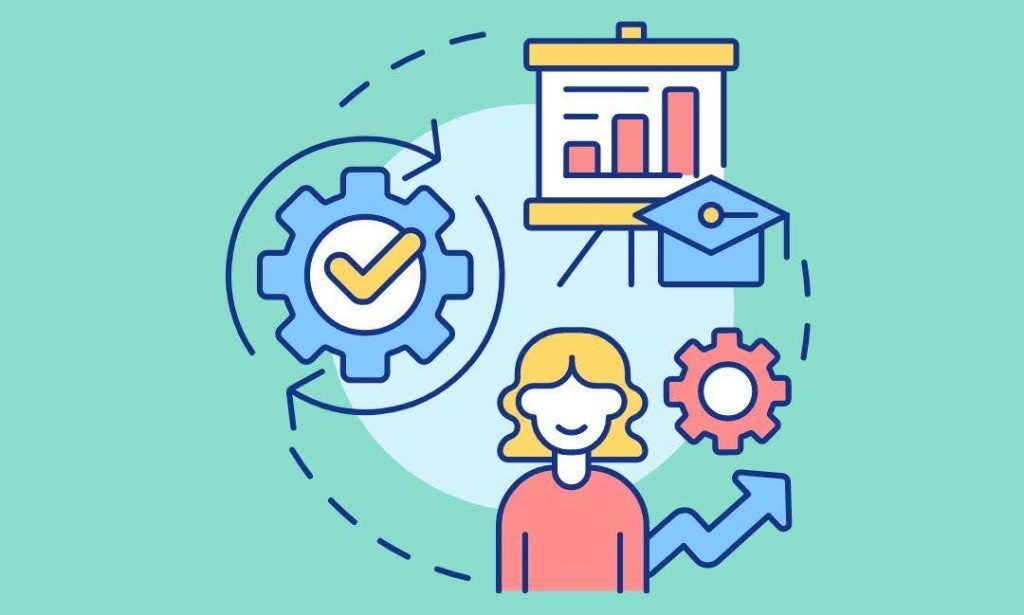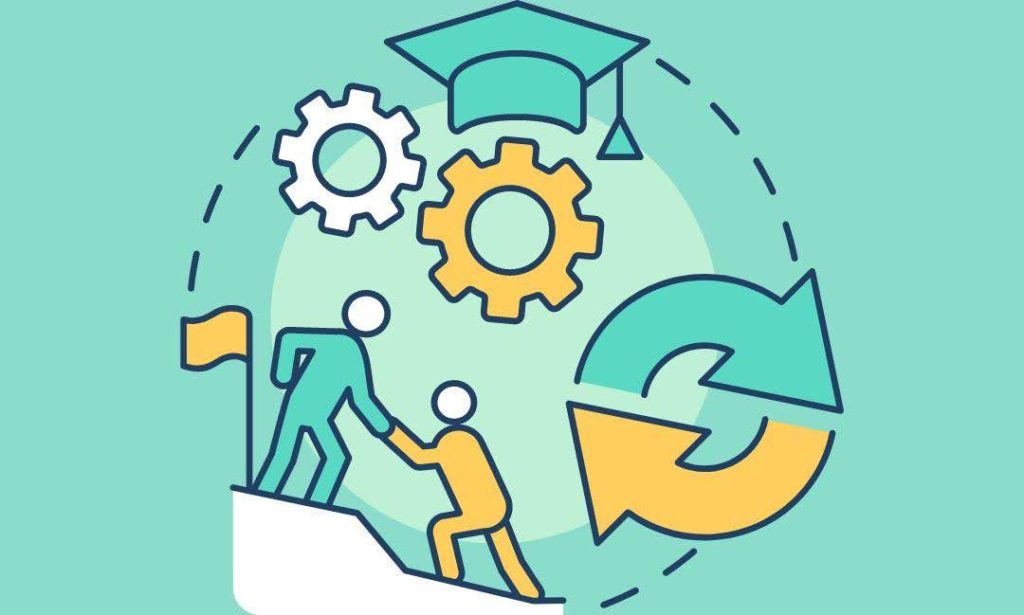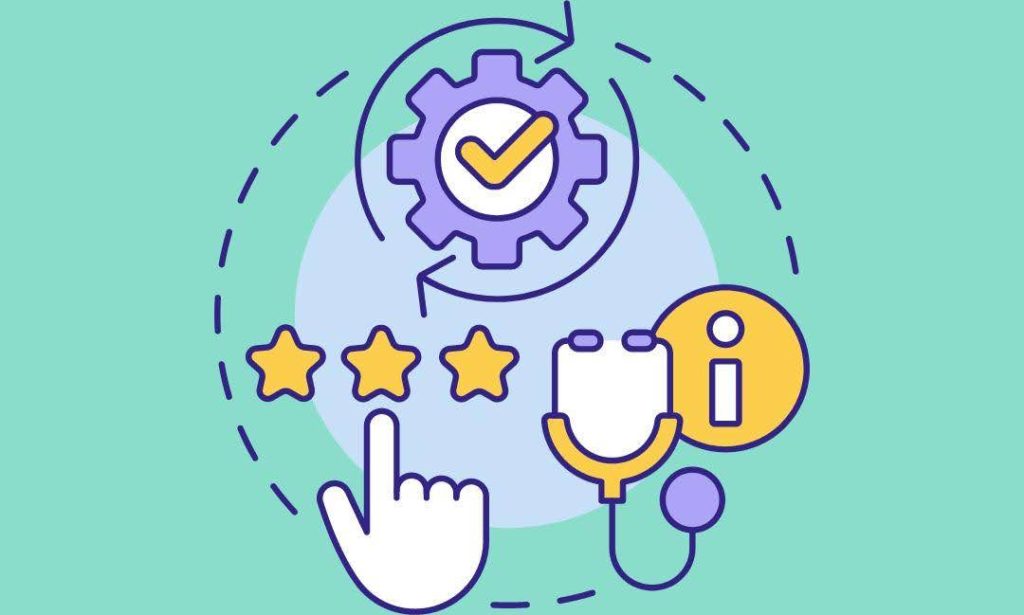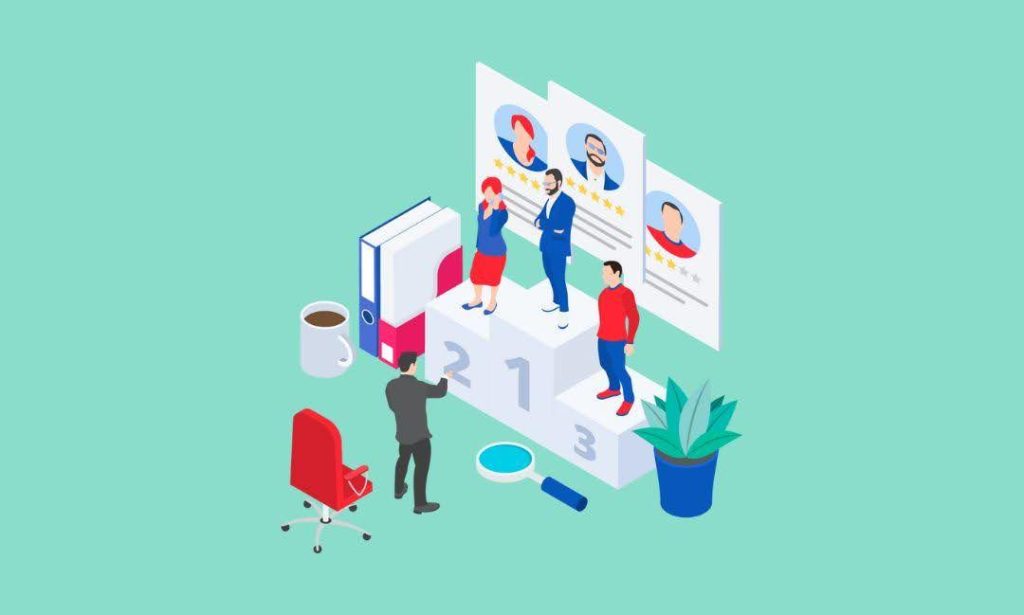
Now introduce upskilling and reskilling, two potent techniques that are completely changing the way businesses handle personnel planning and talent development.
These strategies help firms future-proof themselves against impending disruptions and address current talent gaps.
This article will discuss the ideas of upskilling and reskilling and discuss real-world case studies to guide you on how to go about the process successfully.
What is a Skill Gap?
The discrepancy between the skills companies require and their workforce’s current abilities is known as the “skill gap.”
This gap can manifest in various ways:
- Technological developments: Employees must swiftly adjust to new technology to stay relevant.
- Changing roles in the workplace: A lot of jobs are calling for a combination of old and new talents.
- Changes in the industry: Industries are changing at large, and the workforce needs to adapt to these changes.
- Worldwide competition: Businesses today have to contend with a global workforce, necessitating a flexible skill set from their staff members.
According to the “Future of Jobs Report 2020,” published by the World Economic Forum, a change in the proportion of work performed by machines might result in the displacement of 85 million jobs by 2025, while creating 97 million new ones.
This highlights the significance of strategically developing the workforce to close the skill gap.
Also Read – Navigating the Shift to a Skills-Driven Future: A Guide for HR and L&D Teams
What is Upskilling and Reskilling?
Even though the terms are frequently used interchangeably, reskilling and upskilling are different ideas with specific uses:
Upskilling is improving an employee’s skill set to help them perform better in their present position. The goal of upskilling is to build upon a foundation of knowledge in a specific job function.

Reskilling is the process of learning new abilities to move into an entirely different role. When an organization wants to reshape its staff to meet new business objectives, reskilling becomes more important.
Both strategies are crucial components of an all-encompassing talent development plan, because they enable businesses to adjust to shifting market conditions while holding onto crucial institutional knowledge.
The Benefits of Upskilling and Reskilling
There are several benefits to implementing upskilling and reskilling programs for people.
For Employers

- Talent development at a low cost: Training existing staff members is frequently less expensive than integrating new hires.
- Enhanced innovation: Providing employees with latest training fosters creativity and innovative problem-solving skills.
- Competitive advantage: Businesses with talented, flexible employees are better equipped to outperform rivals.
For Employees

- Job security: Employers, globally, value employees with in-demand skills higher.
- Career advancement: Gaining new abilities can lead to internal promotions and lateral growth.
- Personal growth: Possibilities for learning and development help people feel confident and fulfilled.
- More significant earning potential: Higher pay is frequently correlated with improved abilities.
Strategies for Implementing Upskilling and Reskilling Programs
Here are key strategies for implementing effective programs:
1. Conduct a Skills Gap Analysis
Begin by assessing your organization’s current skill inventory against future needs.

This analysis should consider:
- Current job roles and required competencies
- Projected business goals and the skills needed to achieve them
- Emerging technologies and their impact on job functions
- Industry trends and anticipated changes in skill demand
Tools like skills matrices, employee surveys, and performance data can aid in this assessment.
2. Develop a Clear Vision and Objectives
Establish clear goals for your reskilling and upskilling programs. Establish quantifiable, precise goals that correspond with the strategic goals of your company.
These might include:
- Percentage of employees participating in learning programs
- Number of internal promotions or role transitions
- Improvement in key performance indicators
- Reduction in hiring costs for specialized roles
3. Create Personalized Learning Paths
Acknowledge that every employee is unique in their learning choices, needs, and career goals.

Provide adaptable learning pathways that meet the demands of the organization and individual ambitions.
This might involve:
- Providing a combination of self-paced courses, on-the-job training, and formal training
- Offering coaching and mentorship initiatives
- Leveraging technology like AI-driven learning platforms to suggest personalized content
4. Embrace a Variety of Learning Formats
Change up the courses you offer to suit learners’ varying schedules and learning preferences.

- Online courses for independent learning
- Virtual instructor-led training for interactive learning
- Microlearning for bite-sized, just-in-time information
- Immersive experiences using VR/AR for practical skill application
- Peer-to-peer education via knowledge-sharing websites
5. Foster a Culture of Continuous Learning

Create an environment that encourages and rewards ongoing skill development:
- Integrate learning into performance reviews and career progression discussions
- Recognize and celebrate learning achievements
- Provide dedicated time for skill development during work hours
- Encourage managers to support their team’s learning initiatives
Also Read – Learning and Development as the Key to Employee Retention
6. Use Partnerships and External Resources
Don’t limit learning opportunities to internal resources.

Consider the following:
- Partnering with educational institutions for specialized training programs
- Collaborating with industry associations for certification courses
- Making use of online learning resources such as LinkedIn Learning, Coursera, etc
- Engaging with vendors and suppliers for product-specific training
Also Read – Is Using an Online Learning and Development Platform like Coursera or Udemy Beneficial?
7. Measure and Iterate

Regularly assess the effectiveness of your upskilling and reskilling programs:
- Track participation rates and completion of learning programs
- Measure the impact on performance metrics and business outcomes
- Gather feedback from employees and managers
Analyze data to find patterns and potential areas for improvement.
To guarantee that your programs stay relevant and successful, be ready to modify your strategy in light of these revelations.
Real-World Success Stories
Upskilling and reskilling projects have been successfully implemented by a number of enterprises, proving the practical advantages of these strategies:
Amazon’s Upskilling 2025 Initiative
Amazon pledged to invest $700 million by 2019, to upskill 100,000 workers by 2025. The program includes:
- Machine Learning University: Training software engineers in machine learning skills
- Amazon Technical Academy: Helping non-technical employees transition into software engineering careers
- Associate2Tech: Supporting fulfillment center associates in moving into technical roles
This program gives employees a chance to further their careers, while also meeting Amazon’s increasing need for technical expertise.
AT&T’s Future Ready Initiative
In response to the telecom sector’s rapid technological transformation, AT&T initiated a large-scale reskilling initiative.
Key elements include:
- Partnering with universities to create custom online degrees
- Providing employees with a career intelligence platform to identify skill gaps and learning opportunities
By providing nano degrees in popular fields like data analytics, the initiative has enabled AT&T to hire internal applicants for 40% of its technology management positions, resulting in significant cost savings from onboarding.
PwC’s Digital Fitness App
To evaluate and enhance workers’ digital competencies, PwC created the Digital Fitness App, which:
- evaluates an individual’s digital knowledge across various domains
- provides personalized learning recommendations
- provides quick learning materials for developing skills while on the road.
With the help of this creative strategy, PwC has developed a staff better suited to assist clients in the digital age.
Challenges and Considerations
Although reskilling and upskilling have many advantages, businesses may encounter difficulties with implementation:
- Resistance to change: Some workers could be reluctant to accept change or to acquire new abilities.
- Time constraints: It can be difficult to juggle additional learning with regular work obligations.
- Measuring ROI: It might be difficult to put a number on how learning activities affect company results.
- Adapting to change: Making sure that educational materials stay current in a world that is constantly and rapidly evolving.
- Allocating resources: Deciding how much to spend on projects for learning and development.
To address these challenges, organizations should:
- Communicate the value and necessity of upskilling and reskilling clearly to all stakeholders
- Provide adequate support and resources for employees undertaking learning journeys
- Implement robust tracking and analytics systems to measure the impact of learning programs
- Update and improve training materials frequently to reflect emerging technologies and market trends.
- Consider retraining and upskilling as strategic investments as opposed to optional costs.
The Future of Work
It’s obvious that the idea of a “job for life” is becoming less relevant as we turn to the future. Because of the changes in the economy, it is now essential for corporate competitiveness to engage in continuous learning.

Businesses that foster a culture of continuous learning will be better equipped to:
- Respond to technological disruptions
- Attract and retain top talent
- Drive innovation and maintain competitive advantage
- Create a more engaged and satisfied workforce
- Build resilience against economic uncertainties
Conclusion
Upskilling and reskilling employees to close the skill gap is no longer an HR project – but a strategic necessity for businesses hoping to prosper in an increasingly complicated business environment. Businesses that invest in their employees’ talents can create a win-win scenario whereby employees acquire applicable skills and organizations develop a more creative workforce.
The moment to begin is now, as skill improvement is a continuous process. By adopting upskilling and reskilling strategies, individuals can ensure they stay relevant in the face of future changes.
Frequently asked questions
While reskilling concentrates on teaching employees new skills to take on other jobs inside the organization, upskilling entails improving employees’ skills to stay up with changing job needs.
It ensures that workers have the abilities needed to fulfill future employment requirements, which helps close the skill gap. This increases employee retention and happiness, while also increasing productivity and innovation.
Businesses can carry out gap analyses, performance reviews, and skill assessments. They can also determine what skills are lacking by keeping up with industry developments.
Employees acquire new skills that increase their value to the organization. Because they are more capable of handling changing job duties, it also helps with their professional advancement and job stability.
Businesses can offer workshops to create possibilities for lifelong learning and assist staff members in mastering new skills.




























